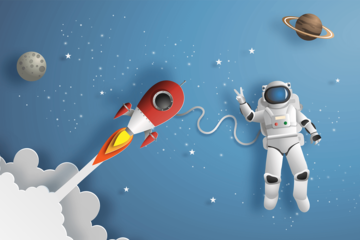Browse
Posted on: #iteachmsu

Graphical user interface
graphical user interface:
The graphical user interface (GUI is a form of user interface that allows users to interact with electronic devices through graphical icons and audio indicators such as primary notation, instead of text-based user interfaces, typed command labels, or text navigation. GUIs were introduced in reaction to the perceived steep learning curve of command-line interfaces (CLIs), which require commands to be typed on a computer keyboard.
The actions in a GUI are usually performed through direct manipulation of the graphical elements. Beyond computers, GUIs are used in many handheld mobile devices such as MP3 players, portable media players, gaming devices, smartphones, and smaller household, office, and industrial controls. The term GUI tends not to be applied to other lower-display resolution types of interfaces, such as video games ), or not including flat screens, like volumetric displays.
User interface and interaction design:
Designing the visual composition and temporal behavior of a GUI is an important part of software application programming in the area of human-computer interaction. Its goal is to enhance the efficiency and ease of use for the underlying logical design of a stored program, a design discipline named usability. Methods of user-centered design are used to ensure that the visual language introduced in the design is well-tailored to the tasks.
The visible graphical interface features of an application are sometimes referred to as chrome or GUI (pronounced gooey) Typically, users interact with information by manipulating visual widgets that allow for interactions appropriate to the kind of data they hold. The widgets of a well-designed interface are selected to support the actions necessary to achieve the goals of users.
The graphical user interface (GUI is a form of user interface that allows users to interact with electronic devices through graphical icons and audio indicators such as primary notation, instead of text-based user interfaces, typed command labels, or text navigation. GUIs were introduced in reaction to the perceived steep learning curve of command-line interfaces (CLIs), which require commands to be typed on a computer keyboard.
The actions in a GUI are usually performed through direct manipulation of the graphical elements. Beyond computers, GUIs are used in many handheld mobile devices such as MP3 players, portable media players, gaming devices, smartphones, and smaller household, office, and industrial controls. The term GUI tends not to be applied to other lower-display resolution types of interfaces, such as video games ), or not including flat screens, like volumetric displays.
User interface and interaction design:
Designing the visual composition and temporal behavior of a GUI is an important part of software application programming in the area of human-computer interaction. Its goal is to enhance the efficiency and ease of use for the underlying logical design of a stored program, a design discipline named usability. Methods of user-centered design are used to ensure that the visual language introduced in the design is well-tailored to the tasks.
The visible graphical interface features of an application are sometimes referred to as chrome or GUI (pronounced gooey) Typically, users interact with information by manipulating visual widgets that allow for interactions appropriate to the kind of data they hold. The widgets of a well-designed interface are selected to support the actions necessary to achieve the goals of users.
Authored by:
Rupali

Posted on: #iteachmsu


Graphical user interface
graphical user interface:
The graphical user interface (G...
The graphical user interface (G...
Authored by:
Wednesday, Jan 27, 2021
Posted on: #iteachmsu

Speech perception
Speech perception is the process by which the sounds of language are heard, interpreted, and understood. The study of speech perception is closely linked to the fields of phonology and phonetics in linguistics and cognitive psychology and perception in psychology. In the speech, perception seeks to understand how human listeners recognize speech sounds and use this information to understand spoken language. Speech perception research has applications in building computer systems that can recognize speech, in improving speech recognition for hearing- and language-impaired listeners, and in foreign-language teaching.
The process of perceiving speech begins at the level of the sound signal and the process of audition. (For a complete description of the process of the audition, After processing the initial auditory signal, speech sounds are further processed to extract acoustic cues and phonetic information. This speech information can then be used for higher-level language processes, such as word recognition.
Link URL : https://iteach-testing.venturit.org/browse/articles
The process of perceiving speech begins at the level of the sound signal and the process of audition. (For a complete description of the process of the audition, After processing the initial auditory signal, speech sounds are further processed to extract acoustic cues and phonetic information. This speech information can then be used for higher-level language processes, such as word recognition.
Link URL : https://iteach-testing.venturit.org/browse/articles
Authored by:
Rupali

Posted on: #iteachmsu


Speech perception
Speech perception is the process by which the sounds of l...
Authored by:
Wednesday, Jan 27, 2021
Posted on: #iteachmsu

ASSESSING LEARNING
Human computer interaction (HCI)
Introduction
Humans interact with computers in any way the interface between humans and computers is crucial to facilitate this interaction. Desktop applications, internet browsers, handheld computers, ERP, and computer kiosks make use of the prevalent graphical user interfaces (GUI) of today.
Voice user interfaces (VUI) are used for speech recognition and synthesizing systems, and the emerging multi-modal and Graphical user interfaces (GUI) allow humans to engage with embodied character agents in a way that cannot be achieved with other interface paradigms. The growth in the human-computer interaction field has been in the quality of interaction, and indifferent branching in its history. Instead of designing regular interfaces, the different research branches have had a different focus on the concepts of multimodality rather than unimodality, intelligent adaptive interfaces rather than command/action based ones, and finally active rather than passive interfaces.
An important facet of HCI is user satisfaction (or simply End-User Computing Satisfaction). "Because human-computer interaction studies a human and a machine in communication, it draws from supporting knowledge on both the machine and the human side. On the machine side, techniques in computer graphics, operating systems, programming languages, and development environments are relevant.
Humans interact with computers in any way the interface between humans and computers is crucial to facilitate this interaction. Desktop applications, internet browsers, handheld computers, ERP, and computer kiosks make use of the prevalent graphical user interfaces (GUI) of today.
Voice user interfaces (VUI) are used for speech recognition and synthesizing systems, and the emerging multi-modal and Graphical user interfaces (GUI) allow humans to engage with embodied character agents in a way that cannot be achieved with other interface paradigms. The growth in the human-computer interaction field has been in the quality of interaction, and indifferent branching in its history. Instead of designing regular interfaces, the different research branches have had a different focus on the concepts of multimodality rather than unimodality, intelligent adaptive interfaces rather than command/action based ones, and finally active rather than passive interfaces.
An important facet of HCI is user satisfaction (or simply End-User Computing Satisfaction). "Because human-computer interaction studies a human and a machine in communication, it draws from supporting knowledge on both the machine and the human side. On the machine side, techniques in computer graphics, operating systems, programming languages, and development environments are relevant.
Authored by:
Rupali

Posted on: #iteachmsu


Human computer interaction (HCI)
Introduction
Humans interact with computers in any way the interfac...
Humans interact with computers in any way the interfac...
Authored by:
ASSESSING LEARNING
Thursday, Jan 21, 2021
Posted on: #iteachmsu

ASSESSING LEARNING
Global Warming
Earth has warmed and cooled time and again. Climate has changed when the planet received more or less sunlight due to subtle shifts in its orbit, as the atmosphere or surface changed, or when the Sun’s energy varied. But in the past century, another force has started to influence Earth’s climate: humanity
How does this warming compare to previous changes in Earth’s climate? How can we be certain that human-released greenhouse gases are causing warming? How much more will the Earth warm? How will Earth respond? Answering these questions is perhaps the most significant scientific challenge of our time.
What is Global Warming?
Global warming is the unusually rapid increase in Earth’s average surface temperature over the past century primarily due to the greenhouse gases released as people burn fossil fuels. The global average surface temperature rose 0.6 to 0.9 degrees Celsius (1.1 to 1.6° F) between 1906 and 2005, and the rate of temperature increase has nearly doubled in the last 50 years.
How does this warming compare to previous changes in Earth’s climate? How can we be certain that human-released greenhouse gases are causing warming? How much more will the Earth warm? How will Earth respond? Answering these questions is perhaps the most significant scientific challenge of our time.
What is Global Warming?
Global warming is the unusually rapid increase in Earth’s average surface temperature over the past century primarily due to the greenhouse gases released as people burn fossil fuels. The global average surface temperature rose 0.6 to 0.9 degrees Celsius (1.1 to 1.6° F) between 1906 and 2005, and the rate of temperature increase has nearly doubled in the last 50 years.
Authored by:
Rupali

Posted on: #iteachmsu


Global Warming
Earth has warmed and cooled time and again. Climate has changed whe...
Authored by:
ASSESSING LEARNING
Monday, Jan 18, 2021
Posted on: #iteachmsu

Internet of Things (IoT)
Internet of Things (IoT):
The Internet of Things (IoT) is a name for the aggregate collection of network-enabled devices, excluding traditional computers like laptops and servers. Types of network connections can include Wi-Fi connections, Bluetooth connections, and near-field communication (NFC). The IoT includes devices such as "smart" appliances, like refrigerators and thermostats; home security systems; computer peripherals, like webcams and printers; wearable technology, such as Apple Watches and Fitbits; routers; and smart speaker devices, like Amazon Echo and Google Home.
The Internet of Things (IoT) is a name for the aggregate collection of network-enabled devices, excluding traditional computers like laptops and servers. Types of network connections can include Wi-Fi connections, Bluetooth connections, and near-field communication (NFC). The IoT includes devices such as "smart" appliances, like refrigerators and thermostats; home security systems; computer peripherals, like webcams and printers; wearable technology, such as Apple Watches and Fitbits; routers; and smart speaker devices, like Amazon Echo and Google Home.
Authored by:
Rupali

Posted on: #iteachmsu


Internet of Things (IoT)
Internet of Things (IoT):
The Internet of Things (IoT) is a name fo...
The Internet of Things (IoT) is a name fo...
Authored by:
Friday, Jan 15, 2021
Posted on: #iteachmsu

ASSESSING LEARNING
Cloud computing
Cloud computing Intro:
Cloud computing is the delivery of different services through the Internet. These resources include tools and applications like data storage, servers, databases, networking, and software.
Cloud computing is a popular option for people and businesses for a number of reasons including cost savings, increased productivity, speed and efficiency, performance, and security.
Cloud computing is the delivery of different services through the Internet. These resources include tools and applications like data storage, servers, databases, networking, and software.
Cloud computing is a popular option for people and businesses for a number of reasons including cost savings, increased productivity, speed and efficiency, performance, and security.
Authored by:
rupali

Posted on: #iteachmsu


Cloud computing
Cloud computing Intro:
Cloud computing is the delivery of different...
Cloud computing is the delivery of different...
Authored by:
ASSESSING LEARNING
Thursday, Jan 14, 2021
Posted on: #iteachmsu

NAVIGATING CONTEXT
Collaborative Discussion
Introduction:
The educator
prepares students for discussion, establishes an environment that welcomes thought, scaffolds discussion where needed, monitors participation, and consolidates thinking.
Collaborative discussion is one of the most effective tools to deepen students’ understanding and engagement with texts. Discussion offers students the opportunity to build arguments and defend them with evidence, consider opposing points of view, elaborate ideas, and build complex webs of knowledge by revealing and furthering thinking. Unfortunately, the amount of time devoted to classroom discussion is measurable in seconds per day (Nystrand 2006), and when discussion does occur, the quality and depth of students’ discourse is often limited (Zwiers & Crawford, 2011).
Though discussion is often considered a student-centric activity, reaping the benefits of discussion requires educators to play an active role in preparing students, creating an environment that welcomes thought, scaffolding discussion when needed, monitoring participation, and consolidating thinking.
The educator
prepares students for discussion, establishes an environment that welcomes thought, scaffolds discussion where needed, monitors participation, and consolidates thinking.
Collaborative discussion is one of the most effective tools to deepen students’ understanding and engagement with texts. Discussion offers students the opportunity to build arguments and defend them with evidence, consider opposing points of view, elaborate ideas, and build complex webs of knowledge by revealing and furthering thinking. Unfortunately, the amount of time devoted to classroom discussion is measurable in seconds per day (Nystrand 2006), and when discussion does occur, the quality and depth of students’ discourse is often limited (Zwiers & Crawford, 2011).
Though discussion is often considered a student-centric activity, reaping the benefits of discussion requires educators to play an active role in preparing students, creating an environment that welcomes thought, scaffolding discussion when needed, monitoring participation, and consolidating thinking.
Posted by:
Chathuri Super admin..

Posted on: #iteachmsu


Collaborative Discussion
Introduction:
The educator
prepares students for discussion, establ...
The educator
prepares students for discussion, establ...
Posted by:
NAVIGATING CONTEXT
Thursday, Jan 14, 2021
Posted on: #iteachmsu

What Is Big Data? and How Big Data Works?
Big data:Big data refers to the large, diverse sets of information that grow at ever-increasing rates. It encompasses the volume of information, the velocity or speed at which it is created and collected, and the variety or scope of the data points being covered (known as the "three v's" of big data).
Big data is a great quantity of diverse information that arrives in increasing volumes and with ever-higher velocity.
Big data can be structured (often numeric, easily formatted and stored) or unstructured (more free-form, less quantifiable).
Nearly every department in a company can utilize findings from big data analysis, but handling its clutter and noise can pose problems.
Big data can be collected from publicly shared comments on social networks and websites, voluntarily gathered from personal electronics and apps, through questionnaires, product purchases, and electronic check-ins.
Big data is most often stored in computer databases and is analyzed using software specifically designed to handle large, complex data sets.
How Big Data Works
Big data can be categorized as unstructured or structured. Structured data consists of information already managed by the organization in databases and spreadsheets; it is frequently numeric in nature. Unstructured data is information that is unorganized and does not fall into a predetermined model or format. It includes data gathered from social media sources, which help institutions gather information on customer needs.
Big data can be collected from publicly shared comments on social networks and websites, voluntarily gathered from personal electronics and apps, through questionnaires, product purchases, and electronic check-ins. The presence of sensors and other inputs in smart devices allows for data to be gathered across a broad spectrum of situations and circumstances.
Big data is a great quantity of diverse information that arrives in increasing volumes and with ever-higher velocity.
Big data can be structured (often numeric, easily formatted and stored) or unstructured (more free-form, less quantifiable).
Nearly every department in a company can utilize findings from big data analysis, but handling its clutter and noise can pose problems.
Big data can be collected from publicly shared comments on social networks and websites, voluntarily gathered from personal electronics and apps, through questionnaires, product purchases, and electronic check-ins.
Big data is most often stored in computer databases and is analyzed using software specifically designed to handle large, complex data sets.
How Big Data Works
Big data can be categorized as unstructured or structured. Structured data consists of information already managed by the organization in databases and spreadsheets; it is frequently numeric in nature. Unstructured data is information that is unorganized and does not fall into a predetermined model or format. It includes data gathered from social media sources, which help institutions gather information on customer needs.
Big data can be collected from publicly shared comments on social networks and websites, voluntarily gathered from personal electronics and apps, through questionnaires, product purchases, and electronic check-ins. The presence of sensors and other inputs in smart devices allows for data to be gathered across a broad spectrum of situations and circumstances.
Authored by:
Rupali

Posted on: #iteachmsu


What Is Big Data? and How Big Data Works?
Big data:Big data refers to the large, diverse sets of information ...
Authored by:
Thursday, Jan 14, 2021


